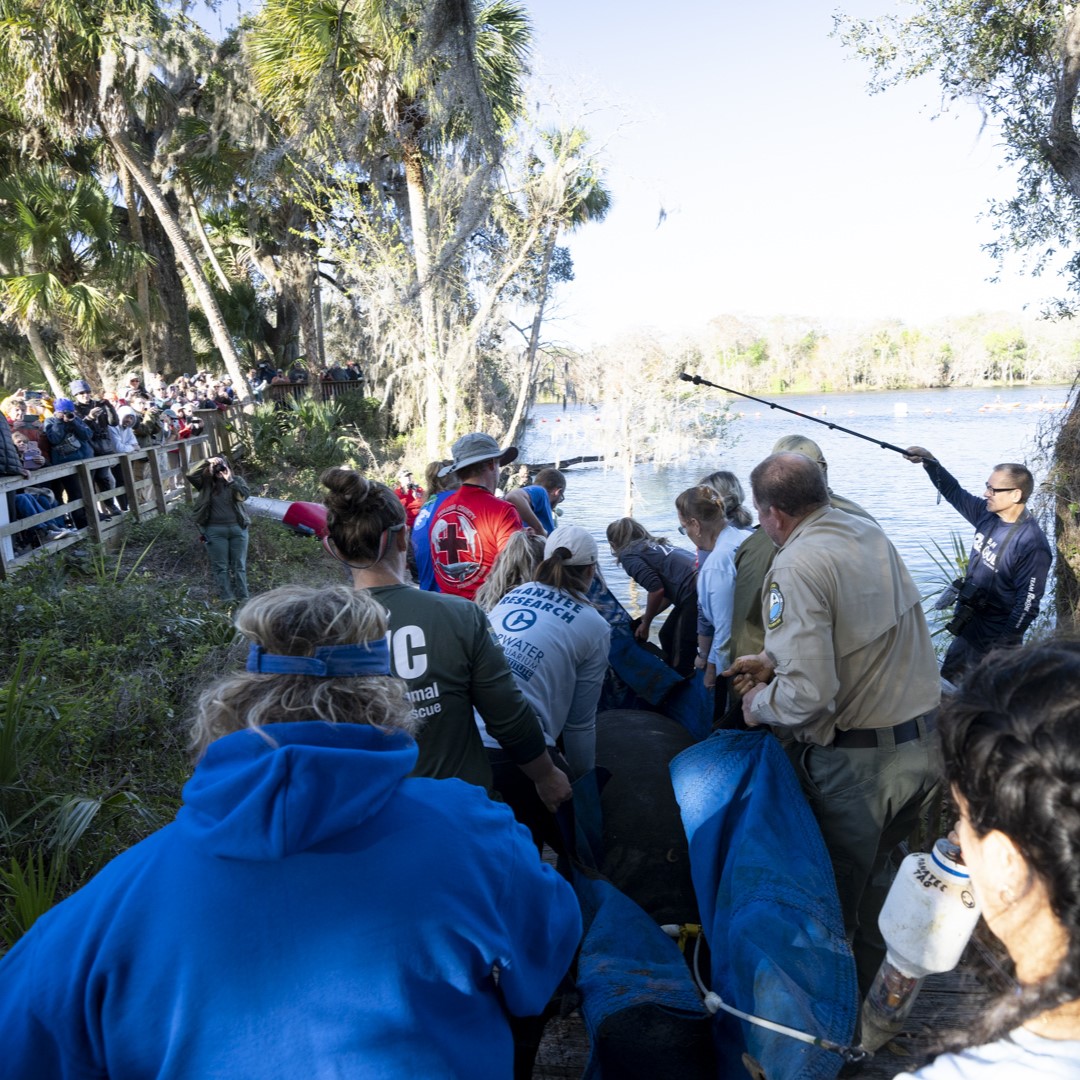
Partners in Conservation
Learn about the Zoo’s financial commitment to holistic conservation efforts in Central Africa.


The vaquita is a marine mammal with the smallest range of any porpoise. In the last 20 years, populations have dropped from 600 to less than 10 animals.
Conservation Status: Critically Endangered, on the edge of extinction
Habitat & Range: Found only in warm, shallow coastal waters in the northern part of the Gulf of California
Threats: Bycatch, animals unintentionally becoming hooked or entangled in fishing gear, causing injury or death.
Currently the largest of all hard-shelled sea turtles, loggerhead turtles are a keystone species, integral to its ecosystem.
Conservation Status: Vulnerable, populations are decreasing
Habitat & Range: Found in coastal and open waters in nearly all the world's temperate and tropical oceans from the Atlantic Ocean from Newfoundland to Argentina, the Indian Ocean from southern Africa to the Arabian Gulf to western Australia, the Mediterranean Sea, and the Pacific Ocean from Alaska to Chile and Australia to Japan.
Threats
This fish is sometimes referred to as a “living fossil” because its physical characteristics have remained unchanged for hundreds of millions of years.
Conservation Status: Critically Endangered, unknown if populations are increasing or decreasing
Habitat & Range: Found in areas with deep underwater cave systems along the eastern coast of Africa, from Kenya to South Africa
Threats: Bycatch, animals unintentionally becoming hooked or entangled in fishing gear, causing injury or death.
Duck-billed platypuses are one of three species of monotremes. These species are unique among mammals in that lay eggs.
Conservation Status: Near Threatened, populations are decreasing
Habitat & Range: Inhabit rivers, lagoons, and streams with steep, vegetation-covered banks in the wetter regions of Tasmania and Australia
Threats
Sawfish use their exposed teeth, resembling a saw, to catch prey by rapidly moving their head from side to side.
Conservation Status: Critically Endangered, populations are decreasing
Habitat & Range: The largetooth sawfish has a widespread distribution across the Western Atlantic, Eastern Pacific, Eastern Atlantic, and the Indo-West Pacific near the equator. Juveniles are found in the freshwater estuaries and adults can be found in coastal waters.
Threats
Possibly the largest living of all ray species!
Conservation Status: Endangered, populations are decreasing
Habitat & Range: Found in tropical and warm temperate coastal regions of the world's oceans, including the coasts of southern Africa, ranging from southern California to northern Peru, North Carolina to southern Brazil, and the Gulf of Mexico.
Threats
Humpback whales have been legally protected worldwide from commercial whaling, their biggest threat, since 1966. Thanks to these protections and their remarkable resilience, there have been substantial increases in the North Atlantic, North Pacific, and Southern Hemisphere populations.
Conservation Status: Least Concern, populations are increasing
Habitat & Range: Polar and tropical waters, including those of the Atlantic, Arctic, and Pacific Oceans.
Threats
Steller’s sea cows were wiped out by hunters in the 18th century. See below to learn of the efforts in place to help their warm-water cousins, the American manatee.
Conservation Status: Extinct, likely by 1768
Habitat & Historic Range: Known to have occurred in cold, shallow, coastal marine waters rich in algae and sea grass in the North Pacific Ocean.
Extinct due to:
As you move toward the next scene, you may encounter these animals:
This antelope will migrate to escape extreme conditions from snowstorms to droughts.
Conservation Status: Near threatened, populations are increasing
Habitat & Range: Grassland and desert habitats in parts of Central Asia.
Threats: Over-hunting by humans for its meat and leather
Also known as an African wild dog, these gregarious pack animals cooperate in caring for young, sick, or wounded dogs from the pack.
Conservation Status: Endangered, populations are decreasing
Habitat & Range: The largest remaining populations are in southern Africa. They can be found in habitats ranging from short-grass plains to semi-desert to savannas to upland forests.
Threats: Habitat fragmentation increases their contact with people and domestic animals, leading to human-wildlife conflict and disease transmission.
Also called the Pinta giant tortoise, the last known representative of this species was named Lonesome George.
Conservation Status: Extinct since June 24, 2012
Habitat & Historic Range: Pinta, an island in the northern region of the Galapagos archipelago.
Extinct due to:

The Clearwater Marine Aquarium Research Institute works to protect and conserve fragile aquatic ecosystems and the threatened species that call them home. They focus on the conservation of flagship species, such as manatees, dolphins, sea turtles, and right whales, to ensure greater protection for species and the sensitive habitats that these animals rely on. Staff biologists and ecologists combine their passion for work with technical expertise to conduct rigorous science, share their knowledge with managers to ensure adequate protection for endangered species, educate the public, and conserve our coastal environments.
The Manatee Rescue and Rehabilitation Partnership is a cooperative group of non-profit, private, state, and federal entities who work together to monitor the health and survival of rehabilitated and released manatees. The Columbus Zoo is one of a handful of facilities outside of the state of Florida to rehabilitate manatees and one of only two in Ohio. The Columbus Zoo is also a second stage rehabilitation facility that provides a temporary home for manatees until they are ready for release back to the wild.
When you choose to buy sustainable seafood, you push suppliers to source more environmentally responsible products, driving significant improvements throughout the industry. Ultimately, your choices have an impact on the health of the ocean. Utilize the Seafood Watch guides created by The Monterey Bay Aquarium to help learn your best seafood choices in real-time.
The ocean starts at our household and storm drains. Don’t pour toxic household chemicals down the drain; take them to a hazardous waste center. Reduce fertilizer run-off by choosing hardy plants that require little or no watering, fertilizers, or pesticides. Consider using organic or slow-release fertilizers in your yard. Never pour oil or antifreeze into the storm drain or the street. Pick up litter and ensure you dispose of your trash securely in appropriate, secure receptacles. Reduce single-use plastics by choosing reusable options, including second-hand items.